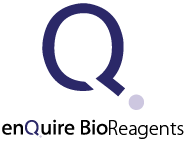Human, Chimpanzee, Sheep, Rat, Mouse, and Chicken Anti-HSP27 Antibody Product Attributes
Species: Human, Chimpanzee, Sheep, Rat, Mouse, and Chicken
Tested Applications: Flow Cytometry, Immunofluorescence, Western Blot, Immunohistochemistry (IHC).
Application Notes: Flow Cytometry (0.5-1ug of antibody/million cells in 0.1ml), Immunofluorescence (0.5-1ug of antibody/ml), Western Blot (0.25-0.5ug of antibody/ml), Immunohistochemistry (IHC) (Formalin-fixed) (0.5-1ug of antibody/ml for 30 minutes at RT)
Clonality: Monoclonal
Anti-HSP27 Antibody Clone: HSPB1/774
Clone HSPB1/774 Host and Isotype: Mouse IgG1 kappa
Anti-Human, Chimpanzee, Sheep, Rat, Mouse, and Chicken HSP27 Positive Control Sample: ~50% of Breast Carcinomas are positive for hsp27 especially those that are also positive for ER,/or PgR.
Cellular Localization of Antibody Predominantly cytoplasmic with some nuclear
Buffer and Stabilizer: 10mM PBS with 0.05% BSA & 0.05% azide.
Antibody Concentration: 200ug/ml
Antibody Purification Method:Protein A/G Purified
Immunogen: Recombinant human HSPB1 protein
Storage Conditions: Store at 2 to 8° C (refrigerate). Stable for 24 months when properly stored.
HSP27 Previously Observed Antibody Staining Patterns
Observed Subcellular, Organelle Specific Staining Data:
Anti-HSPB1 antibody staining is expected to be primarily localized to the cytosol and plasma membrane.Observed Antibody Staining Data By Tissue Type:
Variations in HSP27 antibody staining intensity in immunohistochemistry on tissue sections are present across different anatomical locations. An intense signal was observed in decidual cells in the placenta, endothelial cells in the colon, epidermal cells in the skin, exocrine glandular cells in the pancreas, follicle cells in the ovary, glandular cells in the endometrium, epididymis, fallopian tube and gallbladder, keratinocytes in skin, Langerhans in skin, melanocytes in skin, myocytes in heart muscle, respiratory epithelial cells in the bronchus and nasopharynx, squamous epithelial cells in the esophagus, oral mucosa, tonsil and vagina, trophoblastic cells in the placenta and urothelial cells in the urinary bladder. More moderate antibody staining intensity was present in decidual cells in the placenta, endothelial cells in the colon, epidermal cells in the skin, exocrine glandular cells in the pancreas, follicle cells in the ovary, glandular cells in the endometrium, epididymis, fallopian tube and gallbladder, keratinocytes in skin, Langerhans in skin, melanocytes in skin, myocytes in heart muscle, respiratory epithelial cells in the bronchus and nasopharynx, squamous epithelial cells in the esophagus, oral mucosa, tonsil and vagina, trophoblastic cells in the placenta and urothelial cells in the urinary bladder. Low, but measureable presence of HSP27 could be seen inadipocytes in mesenchymal tissue, bile duct cells in the liver, fibroblasts in mesenchymal tissue, glandular cells in the breast and colon, hematopoietic cells in the bone marrow, hepatocytes in liver, islets of Langerhans in pancreas, Leydig cells in the testis and pneumocytes in lung. We were unable to detect HSP27 in other tissues. Disease states, inflammation, and other physiological changes can have a substantial impact on antibody staining patterns. These measurements were all taken in tissues deemed normal or from patients without known disease.Observed Antibody Staining Data By Tissue Disease Status:
Tissues from cancer patients, for instance, have their own distinct pattern of HSP27 expression as measured by anti-HSP27 antibody immunohistochemical staining. The average level of expression by tumor is summarized in the table below. The variability row represents patient to patient variability in IHC staining.| Sample Type | breast cancer | carcinoid | cervical cancer | colorectal cancer | endometrial cancer | glioma | head and neck cancer | liver cancer | lung cancer | lymphoma | melanoma | ovarian cancer | pancreatic cancer | prostate cancer | renal cancer | skin cancer | stomach cancer | testicular cancer | thyroid cancer | urothelial cancer |
|---|---|---|---|---|---|---|---|---|---|---|---|---|---|---|---|---|---|---|---|---|
| Signal Intensity | ++ | - | + | - | - | - | + | - | ++ | - | ++ | ++ | ++ | - | ++ | ++ | - | - | + | ++ |
| HSPB1 Variability | ++ | + | +++ | ++ | ++ | + | ++ | ++ | ++ | + | + | ++ | ++ | + | ++ | ++ | ++ | + | ++ | +++ |
Limitations and Warranty
enQuire Bio's HSP27 Anti-Human Monoclonal is available for Research Use Only. This antibody is guaranteed to work for a period of two years when properly stored.






There are no reviews yet.